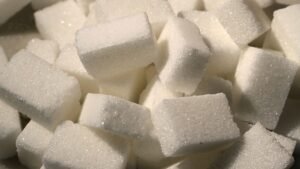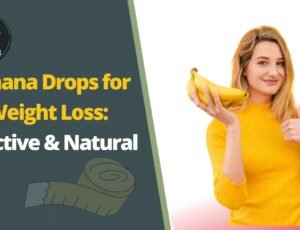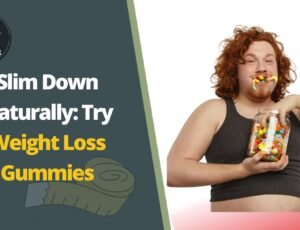
How to Break Sugar Addiction in 30 Days: A Comprehensive Guide

Sugar addiction is a prevalent issue in today’s society, with many people struggling to control their cravings and consumption of sugary foods and beverages.
Table of Contents
Introduction
Excessive sugar intake can lead to a wide range of health problems, including obesity, diabetes, heart disease, and even mental health issues. Breaking free from sugar addiction is not an easy task, but with dedication and a well-structured plan, it is achievable. In this comprehensive guide, we will explore effective strategies and techniques to help you overcome sugar addiction in just 30 days.

Understanding Sugar Addiction

Before embarking on your journey to break sugar addiction, it is crucial to understand the science behind it. Sugar activates the brain’s reward system, leading to the release of dopamine, a neurotransmitter associated with pleasure and reward. This creates a cycle of craving and consumption, making it challenging to resist sugar’s allure. By recognizing the addictive nature of sugar, you can approach the process of breaking free from it with greater awareness.
Steps to Break Sugar Addiction in 30 Days

Step 1: Set a Quit Date
Setting a quit date is an important first step in your journey to quit sugar. Choose a specific date that gives you enough time to mentally prepare for the change. This date will serve as your starting point and will provide a clear timeline to work towards. By setting a quit date, you establish a commitment to yourself and increase your chances of success.
Once you have set the date, mark it on your calendar and share it with a supportive friend or family member. This will help hold you accountable and provide additional motivation. Remember, choosing a quit date is a personal decision, so select a date that feels right for you.
Step 2: Cleanse Your Pantry
To eliminate temptations and set yourself up for success, it’s essential to cleanse your pantry of all sugary foods and beverages. Go through your kitchen and remove items such as cookies, candies, sugary cereals, soda, fruit juices, and any other products that contain added sugars.
Read food labels carefully, as many packaged foods contain hidden sugars. Ingredients like sucrose, fructose, corn syrup, dextrose, and other forms of added sugars can be found in various products. Be diligent in your efforts to remove these items from your pantry, ensuring a clean and supportive environment for your sugar-free journey.
Consider donating unopened, non-perishable items to a local food bank or shelter to minimize waste and help others in need. By clearing out your pantry, you create space for healthier alternatives and remove the temptation of readily available sugary treats.
Step 3: Read Food Labels
Developing the habit of reading food labels is essential when it comes to identifying hidden sources of sugar. Understanding how to decipher nutrition labels empowers you to make informed choices and avoid products with excessive sugar content.
When reading labels, look for the total grams of sugar per serving. Be aware that sugar can be listed under various names, such as sucrose, high fructose corn syrup, maltose, glucose, and more. Familiarize yourself with these names and be cautious of products that contain multiple sources of added sugars.
Additionally, pay attention to serving sizes, as some products may appear to have low sugar content but have small serving sizes that can easily be exceeded. Comparing similar products and choosing options with lower sugar content will help you make healthier choices.
Step 4: Plan Your Meals
Planning your meals in advance is a crucial step in maintaining a sugar-free lifestyle. When you have a well-thought-out meal plan, you are less likely to make impulsive food choices and succumb to sugary temptations.
Start by creating a weekly meal plan that includes balanced meals consisting of lean proteins, vegetables, whole grains, and healthy fats. Aim to include a variety of colors and flavors in your meals to make them satisfying and enjoyable.
Consider batch cooking and meal prepping on weekends or whenever you have spare time. Prepare larger quantities of healthy dishes and portion them into individual containers for easy grab-and-go options throughout the week. This will save time, ensure you have nutritious meals readily available, and reduce the likelihood of resorting to sugary convenience foods.
Include healthy snacks in your meal plan to prevent hunger and cravings. Opt for snacks that are high in protein, fiber, and healthy fats, such as nuts, seeds, Greek yogurt, or cut-up vegetables with hummus. These options will keep you satisfied and provide essential nutrients without the added sugar.
Step 5: Stock Up on Healthy Foods
Once you have planned your meals, it’s time to go grocery shopping and stock up on healthy, sugar-free options. Fill your kitchen with fresh fruits and vegetables, lean meats, fish, whole grains, and low-sugar dairy products.
Choose a variety of fruits and experiment with different flavors and textures. Berries, apples, citrus fruits, and stone fruits are excellent choices that provide natural sweetness along with essential vitamins, minerals, and fiber. Keep these fruits readily available for quick and healthy snacks or as additions to your meals.
When it comes to vegetables, aim for a rainbow of colors to ensure a diverse nutrient intake. Leafy greens, cruciferous vegetables, peppers, tomatoes, and carrots are packed with vitamins and minerals while being low in sugar. Experiment with different cooking methods and seasonings to make them delicious and satisfying.
Lean proteins like chicken, turkey, fish, tofu, and legumes should be staples in your shopping list. They provide essential amino acids for muscle growth and repair, as well as satiety to keep you feeling full. Choose whole grains such as quinoa, brown rice, and whole wheat bread over refined grains, as they contain more fiber and nutrients.
Low-sugar dairy options like Greek yogurt, cottage cheese, and unsweetened almond or coconut milk are excellent sources of calcium and protein. Be cautious of flavored or sweetened varieties, as they often contain added sugars. Opt for plain or unsweetened options and add your own natural sweeteners like fresh fruit or a drizzle of honey, if desired.
By stocking your kitchen with these healthy options, you’ll have the foundation for creating balanced, sugar-free meals and snacks. This will make it easier to resist the temptation of sugary foods and beverages.
Step 6: Find Healthy Substitutes
One of the keys to successfully quitting sugar is finding healthy substitutes for your favorite sugary foods and drinks. By discovering alternatives that satisfy your cravings, you can enjoy sweet flavors without the negative effects of added sugars.
When it comes to desserts, experiment with naturally sweetened options. Fruit salads, mixed berries with unsweetened whipped cream, or baked apples with cinnamon can provide the sweetness you desire while delivering essential nutrients and fiber. Dark chocolate with a high percentage of cocoa can also be enjoyed in moderation as a healthier alternative to sugary chocolate bars.
Instead of soda and sugary beverages, opt for refreshing alternatives. Sparkling water infused with slices of citrus fruits, berries, or fresh herbs can be a great substitute for soda. Herbal teas, both hot and iced, provide a wide range of flavors without added sugars. You can also try making your own fruit-infused water by adding slices of cucumber, lemon, or mint to a pitcher of water for a refreshing and sugar-free beverage.
Step 7: Stay Hydrated
Staying hydrated is essential when quitting sugar. Often, we mistake thirst for hunger, leading to unnecessary snacking or reaching for sugary foods. Drinking an adequate amount of water throughout the day will keep you hydrated, help curb cravings, and support overall health.
Make it a habit to carry a reusable water bottle with you wherever you go. This way, you’ll always have access to water and be reminded to hydrate regularly. Aim to drink at least eight glasses (64 ounces) of water per day, or more if you are physically active or live in a hot climate.
If you find plain water boring, infuse it with slices of citrus fruits, berries, or herbs for natural flavors. This can make drinking water more enjoyable and encourage you to stay hydrated. Experiment with different combinations to find your favorite infused water recipes.
In addition to water, herbal teas can contribute to your hydration goals while offering a variety of flavors and potential health benefits. Choose caffeine-free options like chamomile, peppermint, or ginger tea to enjoy throughout the day.
Step 8: Be Mindful of Hidden Sugars
While you may be aware of the obvious sources of sugar, it’s important to be mindful of hidden sugars in processed foods, condiments, and sauces. Many packaged foods contain added sugars, even those that are marketed as healthy or low-fat options.
Read the ingredient lists carefully to identify hidden sources of sugar. As mentioned earlier, watch out for ingredients such as sucrose, high fructose corn syrup, maltose, glucose, and other forms of added sugars. Be cautious of products that list multiple sources of added sugars in their ingredients.
Avoid or minimize processed foods as much as possible. Instead, choose whole, unprocessed options that allow you to control the ingredients. For example, instead of purchasing store-bought salad dressings, make your own using olive oil, vinegar, and herbs or spices.
When it comes to condiments like ketchup, barbecue sauce, or salad dressings, opt for low-sugar or sugar-free versions. Alternatively, consider making your own using natural sweeteners like honey, maple syrup, or stevia.
By being mindful of hidden sugars and choosing whole, unprocessed foods, you’ll reduce your overall sugar intake and support a healthier lifestyle.
Step 9: Manage Cravings
Sugar cravings can be intense and challenging to overcome. However, with the right strategies, you can manage and reduce these cravings, making it easier to stick to your sugar-free journey.
When cravings strike, distract yourself with other activities. Engage in a hobby or activity that you enjoy, such as reading a book, going for a walk, practicing a musical instrument, or spending time with loved ones. By redirecting your attention, you can shift your focus away from the craving and decrease its intensity.
Another effective strategy is to practice mindful eating. When cravings arise, pause and assess your hunger levels. Ask yourself if you are truly hungry or if the craving is triggered by something else, such as boredom or stress. If you determine that you are genuinely hungry, choose a healthy, sugar-free option to satisfy your hunger.
If you experience intense cravings, opt for a small portion of a healthier substitute. For example, have a square of dark chocolate or a handful of nuts. This allows you to indulge your craving while still maintaining control over your sugar intake.
It’s important to remember that cravings are temporary and typically subside within a few minutes. By finding healthy distractions, practicing mindful eating, and allowing occasional indulgences in moderation, you can effectively manage and reduce your sugar cravings.
Step 10: Seek Support and Accountability
Quitting sugar can be challenging, especially when facing cravings and temptations. Seeking support and accountability can significantly increase your chances of success.
Share your journey with a supportive friend, family member, or join a community of individuals aiming to quit sugar. Having someone to confide in, share your challenges and victories with, and hold you accountable can be immensely helpful during challenging times.
Consider joining online forums or social media groups where you can connect with like-minded individuals who are also on a sugar-free journey. Share your experiences, ask for advice, and offer support to others. These communities can provide motivation, inspiration, and a sense of belonging.
If you feel that your sugar addiction is deeply rooted or impacting your overall well-being, consider seeking professional help. A registered dietitian or therapist can provide personalized guidance, support, and strategies to overcome your addiction and develop a healthy relationship with food.
Remember, you don’t have to navigate this journey alone. Seeking support and accountability from others who understand your struggles can make a significant difference in your success.
Step 11: Track Your Progress
Tracking your progress is essential to stay motivated and recognize the positive changes that occur when you quit sugar. Keeping a journal or using a smartphone app to document your journey can be a powerful tool.
In your journal, record your starting point, including your current eating habits, cravings, and how you feel physically and emotionally. As you progress, track any improvements you notice, such as increased energy levels, better sleep, improved digestion, or weight loss. Celebrate these milestones as they indicate your progress and commitment to a sugar-free lifestyle.
Additionally, use your journal to reflect on any challenges you encounter and how you overcome them. This will serve as a valuable resource in the future, providing insights and strategies for handling similar situations.
If you prefer digital tracking, several smartphone apps are available specifically designed to help individuals quit sugar. These apps can help you track your daily sugar intake, monitor your progress, provide educational resources, and offer support.
By tracking your progress, you’ll have a tangible record of your achievements and a visual reminder of how far you’ve come. This can be a powerful motivator on your journey to break free from sugar addiction.
Step 12: Reward Yourself
As you reach specific milestones or complete the 30-day sugar-free challenge, it’s important to reward yourself for your accomplishments. Celebrating your achievements reinforces your commitment to a sugar-free lifestyle and provides positive reinforcement for your efforts.
Choose non-food rewards that align with your interests and desires. Treat yourself to a massage, indulge in a spa day, buy a new book or piece of clothing, or plan a day trip to a place you enjoy. These rewards serve as reminders of your progress and offer a well-deserved break from daily routines.
Remember, the purpose of rewarding yourself is to acknowledge your achievements and reinforce your commitment to a sugar-free lifestyle. Choose rewards that align with your values and enhance your overall well-being.
Disclaimer: The information provided in this article is for educational purposes only and should not be considered as a substitute for medical advice. Consult a healthcare professional before implementing any home remedies or making significant changes to your lifestyle.
FAQs (Frequently Asked Questions)
Q1. What is sugar addiction, and why is it a prevalent issue today?
A1. Sugar addiction refers to the difficulty many people face in controlling their cravings and consumption of sugary foods and drinks. It is prevalent today due to the widespread availability and consumption of sugary products, leading to various health problems.
Q2. How does sugar addiction affect our brain chemistry?
A2. Sugar addiction affects brain chemistry by activating the brain’s reward system, leading to the release of dopamine, a pleasure-associated neurotransmitter. This creates a cycle of craving and consumption, making it challenging to resist sugar.
Q3. How can setting a quit date help in breaking sugar addiction?
A3. Setting a quit date provides a clear starting point and a commitment to quitting sugar. It gives you time to mentally prepare and increases your chances of success by creating a timeline.
Q4. What should I do to prepare my pantry for a sugar-free lifestyle?
A4. To prepare your pantry, remove all sugary foods and beverages, including hidden sources of sugar. Read food labels carefully and consider donating unopened items to minimize waste and help those in need.
Q5. How can I effectively read food labels to identify hidden sugars?
A5. To identify hidden sugars, check the total grams of sugar per serving and look out for various names for sugar in the ingredient list. Familiarize yourself with these names to make informed choices.
Q6. Why is meal planning essential in breaking sugar addiction?
A6. Meal planning helps you make healthier choices by reducing impulsive food choices and ensuring balanced meals. It also prevents reliance on sugary convenience foods.
Q7. What are some healthy substitutes for sugary foods and drinks?
A7. Healthy substitutes include naturally sweetened desserts like fruit salads, dark chocolate, and herbal teas as alternatives to sugary treats and beverages.
Q8. How can I manage sugar cravings effectively?
A8. Managing cravings involves distractions, mindful eating, and occasional indulgences in moderation. Engaging in activities, assessing hunger levels, and allowing small portions of healthier substitutes can help.
Q9. How important is seeking support and accountability in quitting sugar?
A9. Seeking support from friends, family, or online communities can significantly increase your chances of success by providing motivation, advice, and accountability.
Q10. Why should I track my progress when quitting sugar, and how can I do it effectively? – A10. Tracking progress helps you stay motivated and identify positive changes. You can use a journal or smartphone apps to document your journey, including challenges, improvements, and strategies for overcoming obstacles.
Conclusion
Breaking sugar addiction is a journey that requires patience, determination, and self-compassion. By following these step-by-step activities, you can successfully quit sugar and improve your overall health and well-being. Set a quit date, cleanse your pantry, read food labels, plan your meals, stock up on healthy foods, find healthy substitutes, stay hydrated, be mindful of hidden sugars, manage cravings, seek support and accountability, track your progress, and reward yourself for your achievements. Remember, each step contributes to your success and helps you build a strong foundation for a sugar-free lifestyle. Stay committed, be kind to yourself, and embrace the positive changes that come with breaking free from sugar addiction.






